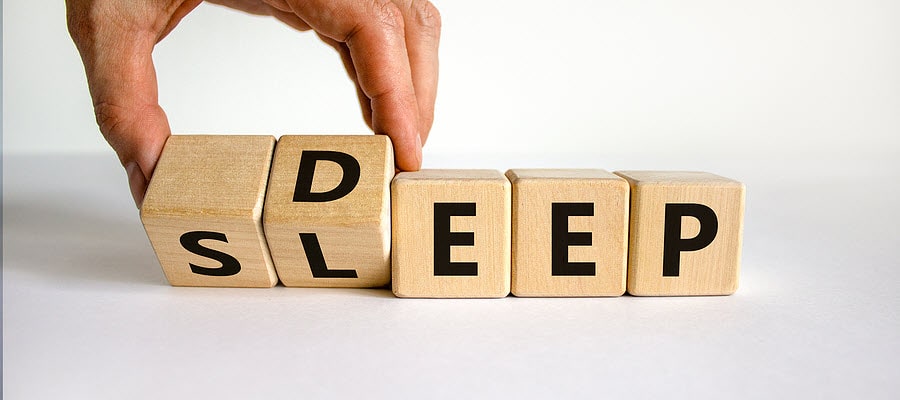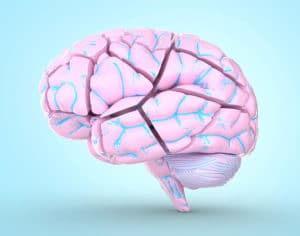Table of Contents
Magnolia Bark (Magnolia officinalis, Magnoliae cortex, Houpo, Chua houpu) has been traditionally used in Chinese and Japanese medicine for the treatment of depression, anxiety, neurosis, and related neurological disorders.
Clinical research in the last couple of decades demonstrate how Magnolia Bark as a nootropic supplement can be so effective for taking care of what our ancestors already knew. By reducing anxiety, depression, pain, symptoms of epilepsy, and other neurocognitive disorders including Alzheimer’s.
The polyphenols found in Magnolia Bark include magnolol and honokiol which provide its nootropic benefits.
As a nootropic, Magnolia Bark is used primarily to lower stress and promote a good night’s sleep.
Magnolia Bark helps:
- The Magnolia Bark compound honokiol appears to be as effective as diazepam for relieving anxiety with fewer side effects.
- Magnolia Bark interacts with the adenosine A1 receptor, dopamine transporter, dopamine D5 receptor (antagonist), serotonin receptors 5-HT1B and 5-HT6 (antagonist), GABAA receptors, hippocampus acetylcholine release, and modulates serotonin activity.[i] And is an acetylcholinesterase (AChE) inhibitor.[ii]
- The compounds honokiol and magnolol found in Magnolia Bark have been shown to significantly decrease β-amyloid (Aβ)-induced neuronal death associated with Alzheimer’s Disease.[iii]
Overview
Magnolia Bark (Magnolia officinalis) comes from the Magnolia tree originally found in Southeast Asia, Eastern North America, Central America and the Himalayas. Its flowers are fragrant with white petals.[iv]

Magnolia Bark was first recorded in the “Shennong Herbal Classic” from the Qin and Han Dynasty around 221 B.C. to 220 A.D. It was used to anxiety, asthma, depression, gastrointestinal disorders, headache, and more.[v]
More than 250 different chemical compounds have been identified in the flowers, bark, and leaves of the Magnolia. But most of its therapeutic potential comes from the bark and roots.
The Magnolia bud is almost exclusively used to treat sinus congestion and sinus headache.[vi]
Magnolia Bark is harvested in the spring from April to June. The root and branch bark are boiled in water and set aside until it turns a purplish brown color. This concoction is then steamed, rolled and dried.
Early chemical studies identified two main active ingredients in the Magnolia Bark: magnolol and honokiol. These neolignanes are the main active components providing its nootropic benefit. [vii]
Other bioactive compounds from Magnolia Bark are the alkaloids benzyl-tetrahydroisoquinoline and aporphine which are found in the leaves, branches and bark. These alkaloids may also have antispasmodic and muscle relaxant benefits.[viii]
Magnolia Bark has been traditionally used to treat diabetes, atherosclerosis, Alzheimer’s disease, gastrointestinal disorders, asthma, and microbial infections.
Studies in human cells indicate a growth inhibitor effect of honokiol and magnolol on human melanoma and carcinoma cells. There is increased interest in developing a novel analogue for chemotherapy derived from Magnolia Bark.[ix]
 How does Magnolia Bark work in the brain?
How does Magnolia Bark work in the brain?
Magnolia Bark boosts brain health and function in several ways. But two in particular stand out.
- Magnolia Bark is anti-anxiety. Magnolia Bark is known for its anti-anxiety benefits as an alternative to benzodiazepines.[x]
Honokiol found in Magnolia Bark has been shown to act on the GABAA receptor subunit α-2 which provides some of its anti-anxiety benefits.[xi]
- Magnolia Bark as an antidepressant. Main-stream psychiatric medicine often treats depression using SSRI’s. Which affects serotonin reuptake in the brain.
Traditional Chinese medicine uses Magnolia Bark to treat depression instead. Studies have demonstrated the honokiol and magnolol found in Magnolia Bark help prevent decreases in serotonin in the frontal cortex, hippocampus, striatum, hypothalamus, and nucleus accumbens.
The combination of honokiol and magnolol also normalize hypothalamic-pituitary-adrenal (HPA) hyperactivity. And induce reductions in platelet activity by upregulating the cAMP pathway.
The results of these studies show how Magnolia Bark provides its potent anti-depressant benefits.[xii]
There is also growing evidence that inflammation in the brain contributes to depression. Here again, Magnolia Bark has been shown to significantly reduce levels of pro-inflammatory cytokines; tumor necrosis factor α (TNF-α), interleukin 1β (IL-1β), and interferon γ (IFN-γ).
Reducing inflammation in the brain may affect tryptophan metabolism which increases serotonin. Providing another way Magnolia Bark as a naturally effective option for dealing with depression.[xiii]
How things go bad
Chronic stress, anxiety, poor blood flow and free radicals (oxidative stress) can damage your brain. And one of the ways this manifests is memory loss.
It comes as no surprise that people with memory loss experience higher rates of anxiety and depression.
↓ Chronic stress reduces memory capacity
↑ inflammation kills brain cells
↓ Free radicals destroy neurons and synapses
↓ Acetylcholine (ACh) levels decline
↓ Learning and memory decline
Magnolia Bark helps reduce inflammation, restores acetylcholine levels, and supports memory.
Magnolia Bark benefits
 Magnolia Bark taken as a nootropic supplement easily crosses the blood-brain barrier helping reduce oxidative stress in the brain and throughout the body.
Magnolia Bark taken as a nootropic supplement easily crosses the blood-brain barrier helping reduce oxidative stress in the brain and throughout the body.
Magnolia Bark is widely used to elevate mood, decrease pain, and improve immune health.
Magnolia Bark activates cannabinoid receptors in your brain. Cannabinoid receptors include CB1 and CB2.
CB1 receptor activation regulates memory, cognition, and motor control. Relieving pain, vomiting, reducing hyperexcitability in epilepsy, stimulating appetite, and euphoria.
CB2 receptor activation provides pain relief and reduces inflammation.[xiv]
Magnolia Bark helps reduce stress by suppressing adrenaline and maintaining healthy cortisol levels.
Studies have shown that honokiol works as effectively as the anti-anxiety drug Valium® (diazepam) without the associated side effects.[xv]
And Magnolia Bark extract helps prevent memory loss because of its anti-inflammatory effects in your brain.
How does Magnolia Bark feel?
Neurohackers report that supplementing with Magnolia Bark provides an anti-anxiety effect within minutes of taking it. Some users say it works as well as diazepine.
Most say they feel relaxed and ready to sleep after taking Magnolia Bark. Using it as a sleep supplement helps them fall asleep faster and stay asleep throughout the night.
But dosage is important. And many users say you will not get the benefits of Magnolia Bark if you don’t follow dosage recommendations.
Feelings of anxiety and depression can be reduced significantly with Magnolia Bark daily supplementation.
Most report that Magnolia Bark is a great way to quickly reduce stress.
 Magnolia Bark Clinical Research
Magnolia Bark Clinical Research
Most of the clinical research for Magnolia Bark are animal studies with very few conducted with humans.
Magnolia Bark is anti-anxiety
Magnolia Bark has long been used as an anxiolytic. Most users report a reduction in anxiety when using it as a supplement.
A 2013 review by researchers at Emory University in Atlanta found that the compound honokiol in Magnolia Bark interacts with the GABAA receptor. The same receptor targeted by anti-anxiety drugs like diazepam and without the side effects caused by benzodiazepines.[xvi]
Another study at the University of South Carolina School of Medicine reported that magnolol and honokiol enhanced both pre-synaptic and post-synaptic GABA transmission in hippocampus neurons.
Magnolia Bark modulated all sub-receptors in this group regardless of the α, β, or γ subunit subtype. Suggesting that supplements containing magnolol and/or honokiol would be effective anxiolytics, sedatives and anti-convulsants.
But the researchers also noted side-effects and significant risk of drug interactions could also be expected.[xvii]
Magnolia Bark for sleep
User reviews of Magnolia Bark extract supplements often report using it for sleep.
Studies show Magnolia Bark holds promise for those who have trouble falling and staying asleep.
The compound honokiol significantly shortened the time to fall asleep to non-rapid eye movement (non-REM, NREM) sleep and increased the amount of non-REM sleep in animal studies.
Honokiol increased the number of state transitions from wakefulness to non-REM sleep, and from non-REM sleep to wakefulness.
But honokiol has no effect on either the amount of REM sleep or depth of sleep.
The study concluded that “honokiol promoted NREM sleep by modulating the benzodiazepine site of the GABAA receptor, suggesting potential applications in the treatment of insomnia, especially for patients who experience difficulty in falling and staying asleep.”
Clearly, those who use Magnolia Bark extract for insomnia have the clinical evidence to back up their claims.[xviii]
Magnolia Bark may prevent seizures
A study was conducted in Belgium with the aim of discovering natural compounds that could be further tested for the treatment of epilepsy.
The researchers collected 14 herbs used in Traditional Chinese Medicine used to treat epilepsy. Of six extracts that tested positive in an animal model for epilepsy, only Magnolia Bark extract showed antiseizure activity.[xix]
Honokiol has been shown to inhibit repetitive firing by blocking glutamate, NMDA and K+ evoked cationic influx. Both honokiol and magnolol were found to increase seizure thresholds but honokiol appeared to be more potent in animal studies.[xx]
 Magnolia Bark recommended dosage
Magnolia Bark recommended dosage
Manufacturers of Magnolia Bark extract generally recommend a nootropic dosage of up to 500 mg per day. Effective dosage depends on the strength of the extract.
We do not have access to clinical data stating the maximum recommended daily dosage for Magnolia Bark.
But do NOT exceed the recommended dosage because studies show in excess, Magnolia Bark can be toxic and cause neuronal cell death.[xxi]
Magnolia Bark is fat-soluble and can easily cross the blood-brain barrier.
Because it is fat-soluble, Magnolia Bark must be taken with a healthy fat like unrefined coconut oil or other healthy oil to ensure absorption.
Magnolia Bark side effects
Magnolia Bark is non-toxic and safe for use as a nootropic supplement based on years of recent food safety studies.[xxii]
 However, although rare, side effects can include tremors, dizziness, excessive sleepiness, and muscle weakness.
However, although rare, side effects can include tremors, dizziness, excessive sleepiness, and muscle weakness.
Do NOT use Magnolia Bark if you are on blood-thinning meds. And discontinue its use at least two weeks prior to surgery.
Avoid using Magnolia Bark if you are pregnant or breastfeeding. One animal study documented honokiol and magnolol blocked calcium-dependent uterine contractions in rats.[xxiii]
Magnolia Bark should NOT be used if you are taking benzodiazepines because studies show this powerful herb significantly increases the sensitivity of GABAA benzo receptors.[xxiv] Combining the drug with Magnolia Bark may result in a benzodiazepine overdose.
Magnolia Bark extract can cause sleepiness, vertigo, and dizziness if you are using muscle relaxants.
Magnolol in Magnolia Bark will stimulate corticosterone secretion which will likely cause problems if you are using steroid medication.
We have reports spanning the last few decades of women developing kidney failure resulting in dialysis after using a Magnolia Bark supplement as part of a weight loss program.
Further investigation showed different alkaloid profiles from those expected from Magnolia Bark. Which likely means something other than pure Magnolia Bark extract was used.[xxv] The lesson here is make sure you are buying a genuine and pure Magnolia Bark supplement.
Type of Magnolia Bark to buy
Magnolia Bark extract is available in capsules, tablets, bags of powder, loose bark tea, and liquid extract.
Magnolia Bark extract is offered in various strengths. Including a certain percentage of honokiol and magnolol which are the two active compounds found in this herb.
Relora® is a proprietary and patented blend of Magnolia Bark extract and Phellondendron amurense bark extract made by Lonza. And licensed for use by dietary supplement manufacturers.
Relora® is supported by 3 peer-reviewed, randomized, double-blind, placebo-controlled studies demonstrating a 42% improvement in mood states, 18% increase in vigor, 11% overall reduction in stress, and a 20% reduction in depression.[xxvi]
Do your best to choose a Magnolia Bark extract supplement made in a GMP facility with no “other ingredients” other than the capsule. And a testing program in place ensuring quality and purity.
My recommendation for a Magnolia Bark extract supplement is: Thorne Research – Relora Plus.
Nootropics Expert Recommendation
 Magnolia Bark extract up to 500 mg per day.
Magnolia Bark extract up to 500 mg per day.
I recommend using Magnolia Bark extract as a nootropic supplement.
Your body does not make the compounds honokiol and magnolol found in Magnolia Bark on its own. So, to get its benefits you must take it as a supplement.
Magnolia Bark is especially helpful for those dealing with anxiety and stress. Studies show and users report it as effective for taming anxiety as benzodiazepines. But without the side effects associated with these drugs.
Magnolia Bark is reported to work well for those suffering from insomnia. Taken as a sleep aid, Magnolia Bark extract helps you fall asleep faster, and stay asleep.
Magnolia Bark extract is also helpful for those suffering from Alzheimer’s. It acts as an acetylcholinesterase inhibitor which increases acetylcholine levels often lacking in the Alzheimer’s brain.
This nootropic herb helps relieve symptoms of depression by maintaining healthy serotonin levels. And reducing the pro-inflammatory cytokines often found elevated in those with depression.
Keep in mind that Magnolia Bark is fat-soluble and requires healthy fats from a meal, or a tablespoon of unrefined coconut oil or MCT Oil for absorption.
Look for purity and quality in a supplement. And for Magnolia Bark a good choice if you are new to this nootropic supplement is: Thorne Research – Relora Plus.







Join The Discussion - 117 comments
Andrew Richardson
December 17, 2024
I have one more question about magnolia bark/Honokiol. If I take 400 mg around 9 PM to help me relax (though it doesn’t always make me feel sleepy), and I go to bed around 2 AM but can’t fall asleep by 4 AM, would it be safe to take 3.5 mg of zopiclone at that point? I usually take half a tablet, which works well for me, but I’m careful to avoid becoming dependent on these types of drugs.
i cant seem to find any drug interaction between the two
David Tomen
December 22, 2024
Andrew, I think they both attach to the same GABAa receptor so one may potentiate the other. But I haven’t seen any contraindication published.
Andrew Richardson
November 26, 2024
so this can calm anxiety, so if i took 200MG, 3 times a day i would be in the safe limit? I read that after 3 months I’d need to take a little break for my liver health
David Tomen
November 26, 2024
Andrew, if you used 200 mg 3-times per day you would be 100 mg over the maximum recommended dosage for Magnolia Bark. But it is not necessary to take split doses of this supplement because Magnolia Bark extract is fat soluble. Which means you need a healthy fat or oil when you take it to make sure it’s absorbed. And used daily and long-term the excess gets stored in fat cells for your body to use as needed.
BTW, there is no evidence that long-term use can harm your liver as long as it is healthy in the first place. But excess dosages can kill cells.
Andrew Richardson
November 27, 2024
So i could take 200Mg or twice a day as needed as long as i don’t exceed 500MG correct
David Tomen
November 27, 2024
Correct.
Andrew Richardson
December 3, 2024
would Magnolia Bark be safe with KAVA at the same time for sleep? since combine is better, if so what dosage of each?
David Tomen
December 3, 2024
Andrew, you can use them together. I suggest starting with the lowest recommended dosage for each and see how that works for you. You may need to decrease or increase one or both depending on how they work for you. This will vary from person to person so testing is necessary.
Andrew Richardson
November 10, 2024
Since Piperine can help with Curcumin Absorption could it also help Magnolia Bark
also Since combining things can help with sleep
would it be safe to add this to l-theanine and lemon balm
David Tomen
November 11, 2024
Andrew, I haven’t looked up every supplement to see what enzyme in the liver is affected. But to find out do some research and find out if any of the supplements you are using are taken care of by CYP3A4 which is the drug-metabolizing enzyme that Piperine inhibits.